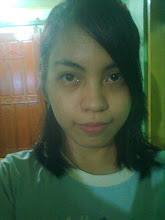When Toots Zynsky was young, she dreamed of becoming a dancer. Friends and family in her small New England town cautioned against it saying she was too tall and too big-boned. And then she didn’t pursue it then. “Everyone thought they were doing me a favour by discouraging me. But people should never tell kids that stuff. You can break any barrier you want if you’re determined to do it. Now I turn my head away when people tell me something is impossible”. She says. The dance world’s loss was the art worlds again. The experience inspired her to never go back from a challenge again. And her early passion for grace in motion led her to invent a singular form of glass artistry she calls filet-de-verre. Zynsky takes thousands of multi-colored, capellini-thin glass threads and arranges them in complex layers on a fibreglass board, a process she likens to drawing or painting. The threads are then thermally fused in a kiln. Zynsky uses molds and her hands to squeeze and shape the hot glass into brilliant sinuous cylinders.
Her work is in the permanent collections of more than seventy museums and public collections worldwide including Metropolitan Museum of Modern Art, the Louvre, and Smithsonian. She also has a devoted coterie of private collectors. She may not have become a dancer, but there’s no doubt about that a balletic instinct informs her trademark vessels. They are freeze-frames of fluctuation, undulating lines and colors formed into objects that look as if they’ve been plucked from some Pixar-animated ocean floor. Just as she was discouraged from her dream of dancing, Zynsky was told filet-de-verre would never work. It took time to perfect the technique Zynsky was pursuing. It was one of a trial and error process, of broken over melted glass. In 1982, with a small National Endowment for the Arts grant, Zynsky headed to Europe, where her dollars would go further and last longer, so she could figure out a better way to create glass threads than pulling them by hand.
Before her European adventure, Zynsky attended the Rhode Island School of Design in Providence, but she struggled to find a concentration that truly inspired her. Painting, drawing, sculpture – they were all too still, too slow. One day she happened upon a class taught by a renowned glass artist Dale Chihuly. “The first time I saw glass-blowing, I fell in love with it because it looked like this wonderful, spontaneous choreography of many bodies moving in the same place. And like dance, there was this constant awareness of everyone around you.” Zynsky says.
The work that made Zynsky famous is a more solitary pursuit than the active group dynamic that initially brought her to the medium. Her art is all about motion and is reflected in the interplay between threads as they melt together and in the flowing parabolas of her finished pieces. “When you’re working with hot blown glass, it’s very fast, and there’s no going back. I’m still always thinking about motion, and so the pieces have become more and more fluid in their form.” In 1999, in Europe, Zynsky moved back to Providence ’s East Side . Her machines are housed at her studio in an old mill building in nearby Pawtucket , Rhode Island
Zynsky is back after a long periods of stops and starts. Recently, over the course of just a few years, eight close friends and family members, including her parents and the co-inventor of her threading machine died. When she finally got back to her studio, the only color she wanted in front of her eyes was red, a hue she calls the color of life. “I covered up all the other colors. And then I made a piece that went from black to red, and then I started with all the nuances in different sizes and shapes. It was the first time it felt really good to be working again.”
Zynsky sent images of the vessels to Barry Friedman, the owner of the gallery she works with in New York City










0 (mga) komento:
Mag-post ng isang Komento